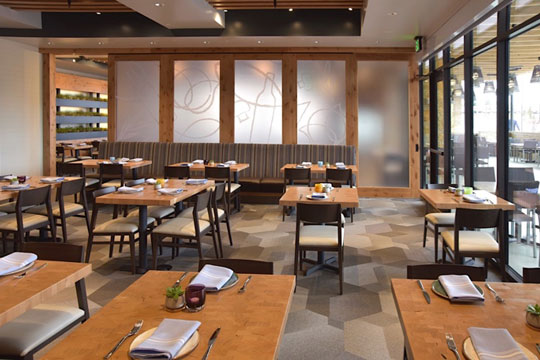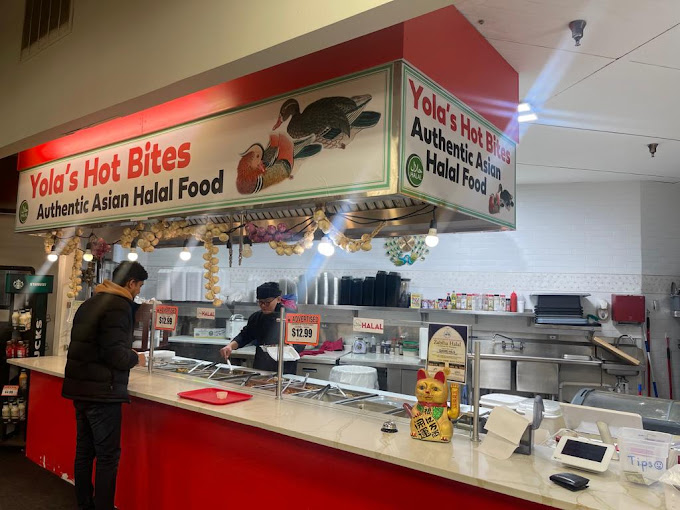Savor Genuine Oriental Food With a Pan-Asian Twist for a Cooking Adventure
Starting a cooking journey with genuine Asian cuisine, boosted with a Pan-Asian spin, offers an one-of-a-kind opportunity to check out the rich tapestry of flavors that define the region's diverse culinary customs. This experience invites you to relish the exquisite balance of tastes-- sweet, salty, spicy, and sour-- balanced by aromatic herbs and spices. Picture the innovative fusion of Thai curry and ramen or the unexpected delight of sushi burritos. As you ponder these enticing dishes, consider the cultural stories and historic impacts that shape them, each bite providing a tale waiting to be uncovered.

Checking Out Pan-Asian Flavors
In the world of global gastronomy, Pan-Asian food stands apart for its impressive diversity and the unified interplay of tastes from different Asian societies. This cooking method commemorates the abundant customs and unique active ingredients located across the continent, producing a tapestry of tastes that is both rewarding and appealing. Key to Pan-Asian cuisine is its capacity to stabilize contrasting flavors-- wonderful, salted, spicy, and sour-- while highlighting the freshness and top quality of each ingredient.
From the umami-rich soy sauce of Japan to the fiery chili peppers of Thailand, Pan-Asian food supplies a substantial palette of flavors. These elements are typically incorporated in inventive methods, improving meals with layers of intricacy. For example, the usage of great smelling natural herbs such as lemongrass and cilantro, usual in Vietnamese and Thai food, includes a refreshing brightness to dishes, while the consolidation of coconut milk provides a velvety, abundant structure.
The focus on fresh fruit and vegetables and fragrant flavors makes sure that each dish is not only a feast for the palate but also for the senses. Pan-Asian food welcomes restaurants to get started on a cooking trip, checking out the substantial and differed landscapes of Eastern gastronomy with every bite.
Combination Meals to Try
While Pan-Asian cuisine is celebrated for its traditional tastes, the modern cooking landscape is significantly accepting blend dishes that mix these timeless elements with influences from various other areas. This cutting-edge technique not only honors the abundant heritage of Oriental cookeries but likewise presents novel taste experiences that interest modern tastes buds.
An archetype of such a blend meal is the Korean-Mexican taco, where seasoned bulgogi beef is wrapped in a warm tortilla, covered with kimchi and a zesty gochujang-infused salsa. This combination marries the strong, savory tastes of Korea with the vivid, fresh elements of Mexican food. In a similar way, sushi burritos have acquired appeal, joining together the delicate creativity of Japanese sushi with the passionate, hand-held benefit of a burrito, typically including combination active ingredients like tempura shrimp and avocado with a drizzle of wasabi mayo.
Another significant dish is Thai curry ramen, which infuses the velvety, aromatic flavors of Thai curry into the reassuring brew of traditional Japanese ramen, developing an unified mix that tantalizes the senses. These blend meals extend past mere novelty; they represent a cooking discussion between societies, encouraging exploration and advancement on the planet of Pan-Asian cuisine.
Crucial Active Ingredients and Flavors
To absolutely appreciate Pan-Asian food, one should recognize the vital active ingredients and flavors that create its foundation. This varied cooking design draws from a rich tapestry of Eastern traditions, utilizing a harmonious mix of flavors and structures. Secret components consist of soy sauce, fish sauce, and oyster sauce, which pass on a savory umami deepness necessary to Oriental meals. Corresponding to these are rice vinegar and mirin, offering a delicate acidity and sweetness.
Aromatic elements are essential, with lemongrass, ginger, and garlic being common across different Pan-Asian dishes. These components provide an aromatic base that improves the intricacy of tastes. Seasonings such as celebrity anise, cardamom, and cinnamon present heat and character, echoing impacts from areas like China and India.

Cooking Methods and Tips
Mastering the art of Pan-Asian cuisine needs knowledge with its distinctive cooking techniques, each adding to useful source the lively tapestry of flavors this culinary custom is commemorated for. Central to these approaches is the stir-fry, a fast food preparation technique that protects the nutritional stability and brilliant colors of components. Using a wok, the stir-fry method permits also heat circulation, vital for achieving the particular appearance and taste balance of Pan-Asian dishes.
One more basic strategy is steaming, particularly prevalent in Chinese food. This mild approach maintains the all-natural tastes and nutrients of ingredients, making it excellent for fish and shellfish and vegetables. Dumplings, a cherished staple, usually profit from steaming, causing soft, delicious textures.
Barbecuing, additionally indispensable, imparts great smoky midsts to recipes such as Oriental bulgogi or Japanese yakitori (Romantic restaurants Islamabad). This method typically entails marinading components, enabling tastes to permeate deeply before food preparation over an open fire or warm plate
Lastly, mastering the art of balancing flavors-- wonderful, sour, salted, bitter, and umami-- is vital. Correctly layering these components can raise a dish from average to amazing, using a complex and pleasing culinary experience that symbolizes the essence of Pan-Asian food.
Eating Experiences Worldwide
Throughout the world, Pan-Asian food provides an exceptional eating experience, celebrated for its abundant tapestry of tastes and dynamic presentations. This cooking phenomenon has actually transcended social boundaries, catching the hearts and tastes of food lovers worldwide. In worldwide cities like New York, London, and Sydney, Pan-Asian dining establishments function as melting pots where culinary customs from Thailand, Japan, China, and beyond converge, supplying diners with an eclectic mix of recipes that highlight the area's diversity.
The international allure of Pan-Asian cuisine depends on its capacity to offer both authenticity and development. Chefs skillfully marry standard components such as lemongrass, soy sauce, and miso with modern methods, causing recipes that are both acquainted and refreshingly brand-new. This blend permits restaurants to begin on a culinary trip that values heritage while embracing modernity.
Moreover, eating experiences are raised via attentively made settings that show the ethos of Pan-Asian aesthetics. From minimalist Japanese-inspired insides to vivid Thai-themed rooms, each restaurant provides a distinct ambiance that enhances the cooking offerings. Consequently, clients are not simply taking in a dish but partaking in a social experience, making Pan-Asian dining a truly international sensation.
Conclusion
The exploration of Pan-Asian food uses a profound understanding of the intricate interaction of flavors and culinary practices across Asia. By embracing combination meals such as Thai curry ramen and sushi burritos, the culinary trip not only highlights the flexibility of typical active ingredients however also showcases cutting-edge contemporary strategies. food near me This gastronomic journey, enhanced by cooking techniques and important seasonings, offers an unique chance to appreciate the social diversity and cooking virtuosity that define Pan-Asian food visit our website on a worldwide range.
Embarking on a cooking trip with genuine Asian food, enhanced with a Pan-Asian twist, offers a special opportunity to check out the abundant tapestry of flavors that specify the area's diverse culinary practices.In the world of worldwide gastronomy, Pan-Asian food stands out for its amazing variety and the unified interplay of tastes from various Oriental societies. Trick to Pan-Asian cuisine is its capacity to balance contrasting flavors-- pleasant, salted, spicy, and sour-- while highlighting the freshness and high quality of each ingredient.
